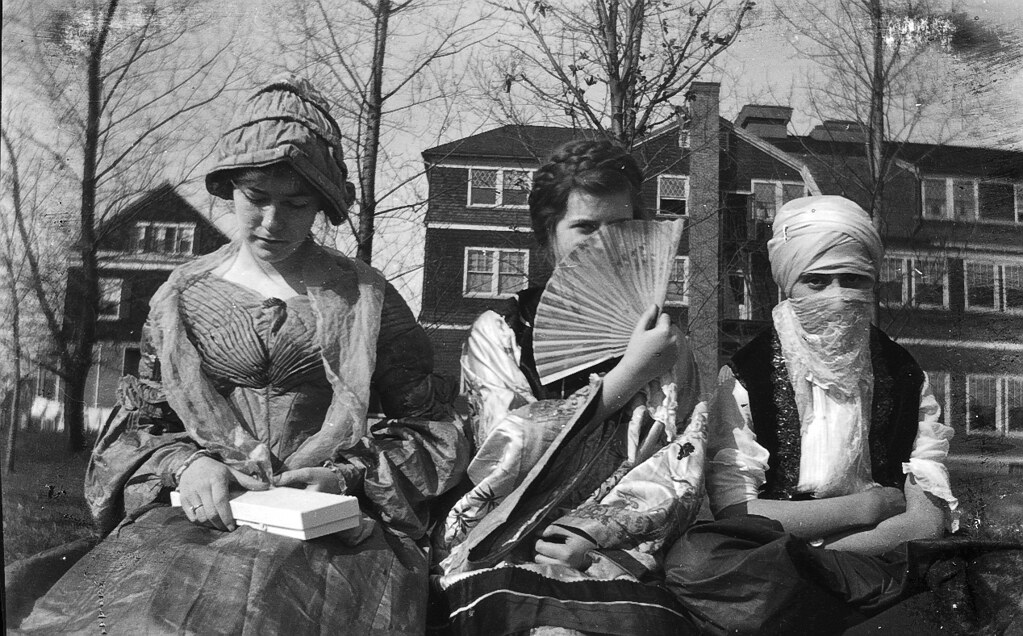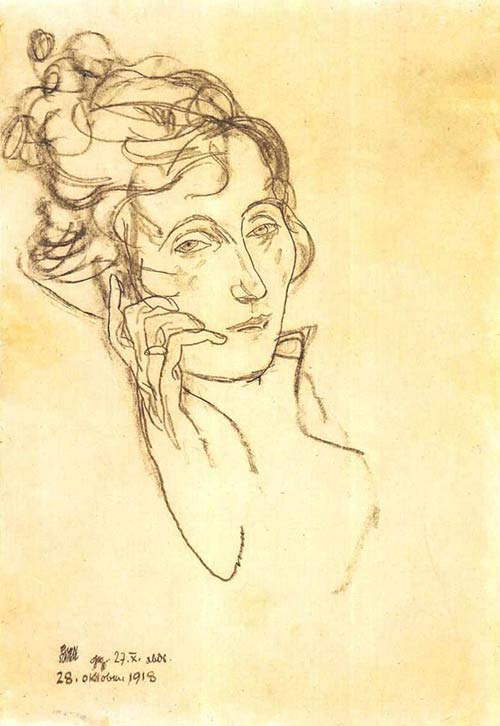
Violet Harris, 15 years old, copes with influenza in her home town of Seattle, Washington, as best she can. While the illness has devastated much of the city, so far no one in her family has died. The Harris family has tried to do their part, to follow the rules, the orders, the laws that seem to pop up day by day to fight the sickness. For Violet, a few of the changes are even fun—no school is all right with her. Now, though, on Day 54, influenza strikes deep into her normal life.
Halloween, 1918.
In Seattle, on a typical Halloween Violet might have gone with her closest friend Rena to dress in a costume, visit neighbors, and ask for candy. Maybe attend a party with cakes and pies made especially for the occasion. Today, Violet’s mother won’t let them. “Mama doesn’t want us to go around more than we need to,” writes Violet. The closest that Violet gets to Halloween is her choice of words in describing the appearance of flu masks on everyone’s face. It’s “ghostly,” she asserts.
In Asheville, North Carolina a newspaper writer uses more pretentious language to describe much the same thing: ” Spookes and spectres, ghosts and hobgoblins, together with all the other aerial characters who usually are abroad in the land of this, their favorite night, will peregrinate under restrictions here this evening.” Boiled down from the journalist’s pot of words, it’s this simple—stay at home, avoid groups, don’t do trick-or-treating, and better luck next year.
In Illinois the “ghost parties, masquerades, and dances which have always been so popular at this time of the year, are as scarce as the corn and eggs.” A few scattered groups of children adapt by placing sharp tacks on window sills and smacking wooden planks on empty front porches and then running away into the darkness.
In western Kentucky a sheriff warns the residents of two counties that no disorderly or malicious mischief will be tolerated by anyone on Halloween.” Notice the sheriff’s phrasing—he invokes “anyone” not as likely violators but as likely enforcers. His statement shows the rawness of people’s feelings on this Halloween.
In Pittsburgh, Pennsylvania, a community where locals say “the celebration in honor of All Saints had reached an abandon of merriment unknown elsewhere in all of America,” “Halloween in Pittsburgh…was but a date and a memory.” Apart from two hundred people straggling into the center of the city, nothing happens on the usual large scale of celebrations and shenanigans. Behind the closed doors of homes and offices and chambers, bad feelings simmer from the heated debates over Halloween and influenza.
Around the United States it is much the same. Quiet, still, indoors, sharing small spaces with small groups, waiting for the next day with a tone of regret. October was done and with it the lives of 195,000 Americans in this month alone, 21,000 of them in the week ending on the eve of All Saints Day. Halloween would have to wait twelve more months.
Was there a worse public moment than Halloween to have in the midst of influenza?
It was a special moment in a year anticipated by children, parents, neighbors. Carefree, happy, a dash of mischief with an assortment of food made and shared by loving hands, people joined together in a way unlike other days on the calendar, in a season that marked the shift from a blazing sun to a blazing fire in a kitchen or parlor. The night was an event of darkness made into a glowing light.
For the twenty-four hours of 1918’s Halloween, influenza wiped it all away. Roaring like a flood of rising water, sickness submerged this day of the people.
People wore masks but none like those worn now. People invoked spirits and unseen forces but never with the immediacy known down to now. People died and were buried but none like the rate seen up to now. People died and were not buried because the numbers overwhelmed everyone’s customs and systems and ways of doing things—never like the now of this wave of influenza and only in nightmares or in scenes of bodies ripped in battle, burned in fire, crushed in an earthquake, or drowned in hurricanes.
The specter of bodies gets into the mind and the memory, the bone as well as the bloodstream. And to work it out and work it through you turn if you can to expressions other than ordinary words. The words need a form outside of the daily.
And so a dying Egon Schiele, coughing and cold, a brilliant and innovative painter in Austria, stares at his latest and final painting, just forty-eight hours old. It is of his wife, Edith, herself dying and now dead of influenza. Today, on Halloween, Egon Schiele closes his eyes and joins his widow as a victim of influenza.
And so again, another artist, Edvard Munche, will soon follow a path blazed by peer and colleague Schiele and will lift his brush and begin his own pair of self-portraits entitled “With Spanish Flu” and “After Spanish Flu.” These works will haunt him for the rest of his life.
And once more again, in a different art form, horror writer H.P. Lovecraft dabbles with characters surrounded by death imitating life. Immersed in the influenza experience of his home in Rhode Island, Lovecraft writes of an evil doctor who brings the dead back to life and of dead creatures—the first zombies—with enough vestiges of life to terrorize a town.
On Halloween 1918, with influenza adding the weight of death, surely the earth tilts on its axis and turns in such a way that life slips deeper into despair. People under strain cannot resist the slide.
Yes, they can resist. And not only that, they can regain.
Despite the upheaval and disappointment of this Halloween, Dr. W.A. Ruble, writes an article for Review & Herald Magazine, dated October 31, 1918. In the article Dr. Ruble answers the question: “after influenza, what?” He describes a mental attitude and spiritual outlook that must animate people to turn this unspeakable tragedy into remarkable triumph. Ruble challenges his readers to become “medical missionaries” and serve people regardless of condition and situation. He wants his readers to pick themselves up and go forward and upward and to do the things they have learned made a difference in the current crisis.
For one year of the Eve, the memories once celebrated in fun and in mood may have been altered. Tomorrow is not simply the next day. Tomorrow is the day of the All and, for Ruble, tomorrow is the day of the Rest.
A thought for you on Day 54, May 5, 2020, fifty-four days after President Trump declares Covid-19 a national emergency—the lost day. Americans in 1918 lost one of their most popular days and traditions, the customs of Halloween. Influenza robbed them of the moment. There are many moments in 1918 destroyed by influenza. They happen in the life of a person, a family, a group, a place, even a nation. Lost and gone, never re-found as a moment in that time. Where I live, in 2020, I’ve noticed that Halloween is probably the only time when people come out of their homes, greet each other, and share a good time as strangers. I have to add, though, that I’ve seen far more of that sort of thing with Covid-19 than in all our ten years combined in this neighborhood. The next time we have a Halloween-style event overturned by Covid-19 we should look to Halloween-1918-variety for reflection. They absorbed the blow, did the deeds required, took some painful breaths, and prepared for the next day. And don’t forget–maybe we have more of Dr. Ruble in us than we assumed. Or maybe Dr. Ruble would look at us and see more potential than we dare admit—the potential to do the things we’re seeing done in the best moments of our 1918. He would stare at us to see if we do them ourselves, actually do them, and not just applaud or wave or stand out and watch flyovers in honor of someone else. But to look in the mirror and, genuinely, wave a thanks at you for what was done this day. And keep your focus on the right Ruble—not the currency but the lesson, not money but merit that you’ll be ready to show after your Halloween.

(note to reader—I invite you to subscribe to this series/blog. The purpose of my posting in this series is the purpose of my enterprise at Historical Solutions—to explore the past in a new way that brings new and different value to you, both in the present (this minute) and on the edge of the future (what’s ahead or forward of this minute). The past is everything before now, the totality of all time before the present; history is a set of very small slices of the past that, for a particular reason, have been remembered. If you wish to contact me privately, please do not hesitate to text or call 317-407-3687)







